Instructions for creating web pages in Wordpress from A to Z (Part 2)
Creating a new website with WordPress requires a lot of different operations. The first part of this article has guided off-site tasks such as hosting, FTP connection, search engine registration, etc. In this second part, we will look at on-site jobs. from the admin panel in the WordPress website.
- Instructions for creating websites with WordPress from A to Z (Part 1)
On-site tasks are mainly related to configuring WordPress installation and installing plugins and themes. You need to perform all these tasks from the WordPress admin area by logging into http://www.yoursite.com/wp-admin URL with the username and password created when installing WordPress.
1. Install a security plugin
WordPress sites are very easy to hack, so the first thing to do after logging into the WordPress site is to install a security plugin. There are many security plugins to choose from, but only use one plugin because the features are often the same and can cause problems if two plugins do the same thing as security login or IP blacklist.
If you want to store comments or contact forms, you also need a spam protection plugin for security reasons. Users can choose another anti-spam plugin like Akismet, but some security plugins such as BulletProof Security, also offer anti-spam features.
2. Configure settings
In WordPress administrators, there are a variety of settings that can be used to configure. You can find them in Settings in the left bar. The admin area of WordPress has a good user interface, so most settings are easy. Here, the article only mentions two things you must not forget.
If using SSL certificates on the site, note that the WordPress Address (URL) and Site Address (URL) options in General Settings use the HTTPS version of the URL.

WordPress comes with the default permalink structure that can be found on the Settings> Permalinks admin page. The default structure does not include the post name, just an ID (eg http://yoursite.com/?p=12). This permalink structure is not a search engine friendly, so consider changing it to other options.
According to Yoast, the most friendly URL structure with SEO is the structure based on the name of the post. Think about which permalink structure is best before launching the website because it is difficult to change later (because the search engines will point to the old URL).
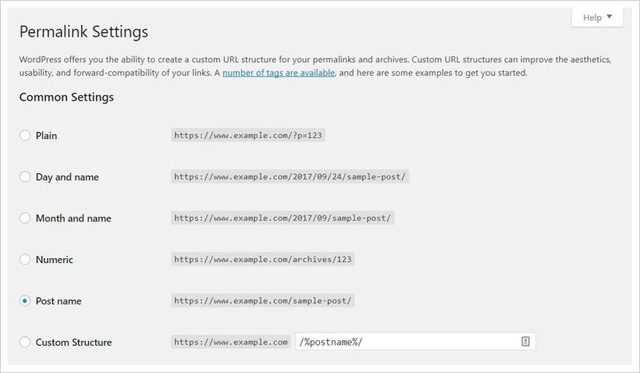
3. Create users
Before launching the website, you should think about how to manage users. WordPress has different user roles (administrators, editors, authors, contributors, subscribers). Never give users a higher role than what they really need. For example, for subscribers (who follow your blog) may not write or edit posts.
Even if the site has only one user, it is advisable to create a non-administrator user and write public posts. This way, it is difficult to find an administrator username. As a general rule, only use administrative users to manage profiles and websites.
You can create new users in Users> Add New in the left bar.
4. Install an SEO plugin
To work well with search engines, you need an SEO plugin on the site. This is the best way to install and configure the SEO plugin before starting content creation as it adds additional fields to the 'Add New Post' and ' Add New Page ' admin pages.
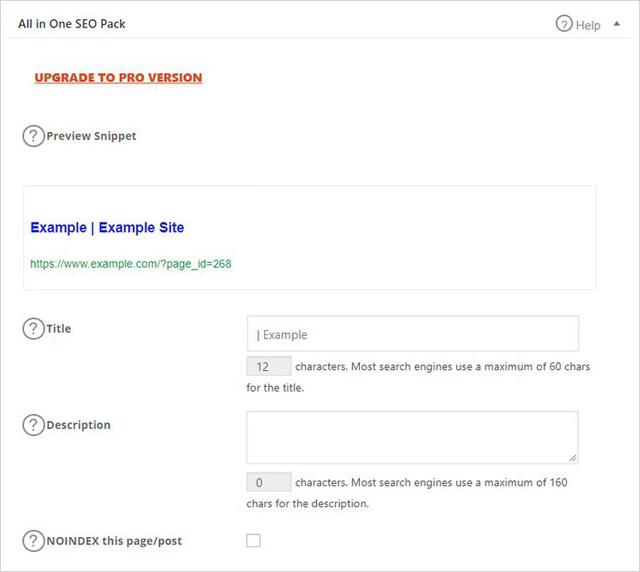
The two most popular SEO plugins are All in One SEO Pack and Yoast SEO. Both are great, choose what you like or something else if you want. Both All in One SEO and Yoast SEO plugins allow linking Google Webmaster Tools and Bing Webmaster Tools accounts to WordPress websites.
5. Create content
The next step is to create some content on the site. Basic WordPress installation allows creating two types of content at the page level: posts and pages. Posts with dates are great for blogs, while pages without dates are ideal for content like About pages, Contact pages, and legal documents. .
Pay attention to classification: tags and categories because they affect users who rate your site. You can manage tags and categories in the Post menu > Categories and Post> Tags in the left bar.
6. Add social buttons
There are two types of social buttons you can add to your site: share and follow buttons. Sharing buttons are placed before or after each post (or page) and they allow users to share that post on various social networking sites like Facebook or Twitter.
The tracking button is usually in the page title or footer (sometimes in the sidebar) and they allow users to follow your social media accounts. You need a separate account on each social media to connect it to the WordPress website.
There are many free social network plugins in WordPress repository. You may need different plugins for tracking and sharing buttons, but there are some such as the AddtoAny Share Buttons plugin that can perform both of these tasks.
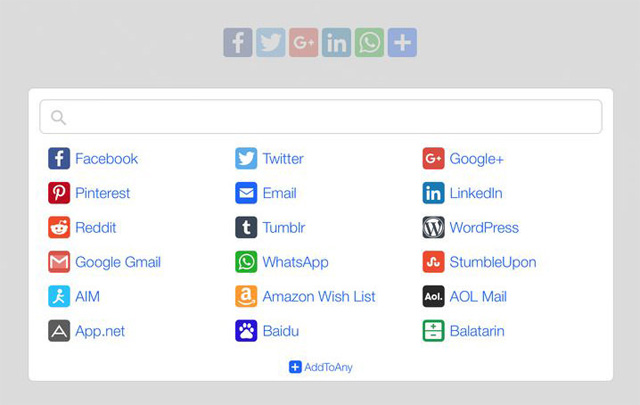
7. Activate and customize the theme
In addition to plugins, the WordPress site will also need a theme. The default WordPress installation comes with an annual default WordPress theme or hosting provider theme.
There are a number of free and paid WordPress themes, please choose a theme that matches the website's goal. You can access themes directly from WordPress, WordPress Theme Directory or in the WordPress admin area in Appearance> Themes> Add New .
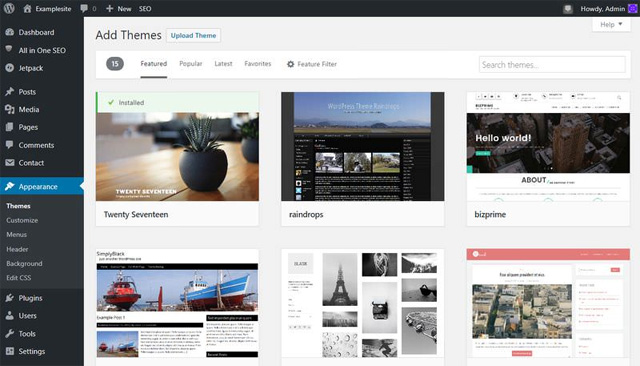
After activating the theme, you can customize it using custom theme in Appearance> Customize. However, you need to create one or more separate menus by visiting the Appearance> Menus admin page > Edit Menus .
Note that some themes have multiple menu locations (title menu, footer menu, sidebar menu, etc.). You need to create a separate menu for each location by assigning a menu to a menu location in the Appearance> Menus> Manage Locations page .
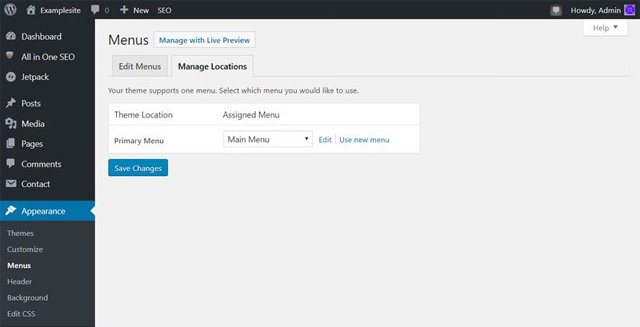
8. Connect the website with Google Analytics
To connect the WordPress website to your Google Analytics account, you need a plugin. There are many free Google Analytics plugins in WordPress plugin repositories, their features are often the same so use only one plugin.
The main goal of the Google Analytics plugin is to add the JavaScript code that belongs to the website and to connect your Google Analytics account, but it also has other additional features. You must add your Google Analytics ID to the admin page of the plugin.
9. Install a cache plugin
The WordPress page will also need a cache plugin, because the cache improves performance (the site will load faster). Cache basically means web documents, such as HTML and static resources (static assets), such as images and scripts, that are constantly changing from temporary cache .
Installing the cache plugin is the last thing you need to do before launching the website, because when the cache is enabled, it may not see the results changed immediately unless the cache is cleared.
There are many cache plugins available in the WP repository, but two of the most popular plugins are the WP Super Cache and W3 Total Cache. WP Super Cache setup is easier, so this is a better choice for beginners or for websites that want a reliable cache solution with a quick setup. W3 Total Cache comes with more options but it is difficult to configure.

10. Check the website
Finally, don't forget to check everything on the site. Check all posts, pages, contacts, social buttons and all the other features you have on the site.
Another thing is don't forget to check the website from different browsers and mobile devices. You can also use external tools such as the Pingdom website speed test tool or Google's phone-friendly testing tool to analyze performance and find potential problems.
You should read it
- Anyone can create a small and simple website with these 10 websites
- How much does it cost to build a WordPress website?
- Instructions for creating websites with WordPress from A to Z (Part 1)
- 30 best free WordPress presentation plugins (2018)
- 5 mistakes everyone mistakenly thinks about WordPress
- 20 WordPress plugins for photo websites (2018)
- Which platform is better for WordPress.com and WordPress.org?
- Wix and Wordpress - Which one is better?
May be interested
- 5 mistakes everyone mistakenly thinks about WordPress
 wordpress has developed much beyond the original feature as a platform for bloggers.
wordpress has developed much beyond the original feature as a platform for bloggers. - What's new in WordPress 5.4?
 on march 31, the latest version of wordpress 5.4 was released and named after nat adderley, a trumpet player, continuing the tradition of naming wordpress releases after jazz artists.
on march 31, the latest version of wordpress 5.4 was released and named after nat adderley, a trumpet player, continuing the tradition of naming wordpress releases after jazz artists. - How to add new posts on WordPress
 posting on a personal wordpress site will help enrich the page content, increasing the number of users.
posting on a personal wordpress site will help enrich the page content, increasing the number of users. - Instructions for installing WordPress on the Vitual Server with Cloud9
 downloading and running internal wordpress servers is quite complicated. if you are a seasoned developer, you should set up a local server with xampp or wamp. but if you are a 'new' who just wants to 'mischief' install wordpress self-host, follow and follow the steps below.
downloading and running internal wordpress servers is quite complicated. if you are a seasoned developer, you should set up a local server with xampp or wamp. but if you are a 'new' who just wants to 'mischief' install wordpress self-host, follow and follow the steps below. - Instructions for installing WordPress on Bluehost
 in this article, you will learn how to install wordpress on bluehost using different methods. the article will also mention what makes bluehost a unique hosting for wordpress.
in this article, you will learn how to install wordpress on bluehost using different methods. the article will also mention what makes bluehost a unique hosting for wordpress. - Squarespace and WordPress - Which one is better?
 this article will compare squarespace and wordpress, listing the advantages and disadvantages of each platform. hopefully, after this comparison, you can choose which platform is more suitable to use.
this article will compare squarespace and wordpress, listing the advantages and disadvantages of each platform. hopefully, after this comparison, you can choose which platform is more suitable to use. - How to add a Wordpress website to Adobe Dreamweaver CS6
 adobe dreamweaver cs6 is an html editor, web development tool and design software released by the adobe system. this is the best web editing software on the market and very easy to use.
adobe dreamweaver cs6 is an html editor, web development tool and design software released by the adobe system. this is the best web editing software on the market and very easy to use. - Keyboard shortcuts for editing on WordPress
 with shortcuts on wordpress, the content editing process is faster than the real way.
with shortcuts on wordpress, the content editing process is faster than the real way. - How to migrate blogs from WordPress.com to WordPress.org
 today's article will show you how to migrate your existing wordpress.com blog to wordpress.org, how to keep search engine rankings for the site and how to redirect existing users.
today's article will show you how to migrate your existing wordpress.com blog to wordpress.org, how to keep search engine rankings for the site and how to redirect existing users. - How to post photos and videos in WordPress
 in wordpress posts when inserting images or videos will increase the lively for the article, attracting more viewers.
in wordpress posts when inserting images or videos will increase the lively for the article, attracting more viewers.










 Create a simple Website with KompoZer
Create a simple Website with KompoZer Anyone can create a small and simple website with these 10 websites
Anyone can create a small and simple website with these 10 websites How to create a free website with Google Sites
How to create a free website with Google Sites Want to build an effective, low cost website, apply the following tips
Want to build an effective, low cost website, apply the following tips Top 7 UX design tools, leading UI
Top 7 UX design tools, leading UI